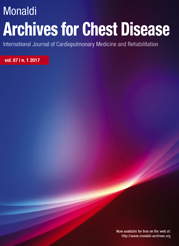Virtual bronchoscopic navigation and guided radial endobronchial ultrasound for peripheral pulmonary lesions: harmonizing modalities to optimize accuracy
All claims expressed in this article are solely those of the authors and do not necessarily represent those of their affiliated organizations, or those of the publisher, the editors and the reviewers. Any product that may be evaluated in this article or claim that may be made by its manufacturer is not guaranteed or endorsed by the publisher.
Authors
Peripheral pulmonary lesions (PPLs) present a significant diagnostic challenge due to their location beyond the reach of traditional bronchoscopy. With lung cancer being the leading cause of cancer-related mortality worldwide, accurate and early diagnosis of PPLs is crucial. Virtual bronchoscopic navigation (VBN) combined with radial endobronchial ultrasound (R-EBUS) has emerged as a promising technique to enhance the diagnostic yield for these lesions. This retrospective observational study evaluated the diagnostic yield of VBN-guided R-EBUS in patients with PPLs identified on computed tomography. The study included nine patients who underwent VBN-guided R-EBUS biopsy sampling. Patient demographics, lesion characteristics, and procedural outcomes were analyzed using descriptive and inferential statistics. The mean age of the patients was 57.33 years, with a mean lesion size of 3.24 cm. The diagnostic yield of VBN-guided R-EBUS was 77.7% (95% confidence interval: 68.5-85.8%). Non-small cell carcinoma was the most frequent histopathological diagnosis (55.5%). Complications included bleeding in two patients (22.2%) and bronchospasm in one patient (11.1%), all managed conservatively. VBN-guided R-EBUS provides high diagnostic accuracy and a low risk of complications in patients with PPLs.
How to Cite

This work is licensed under a Creative Commons Attribution-NonCommercial 4.0 International License.






